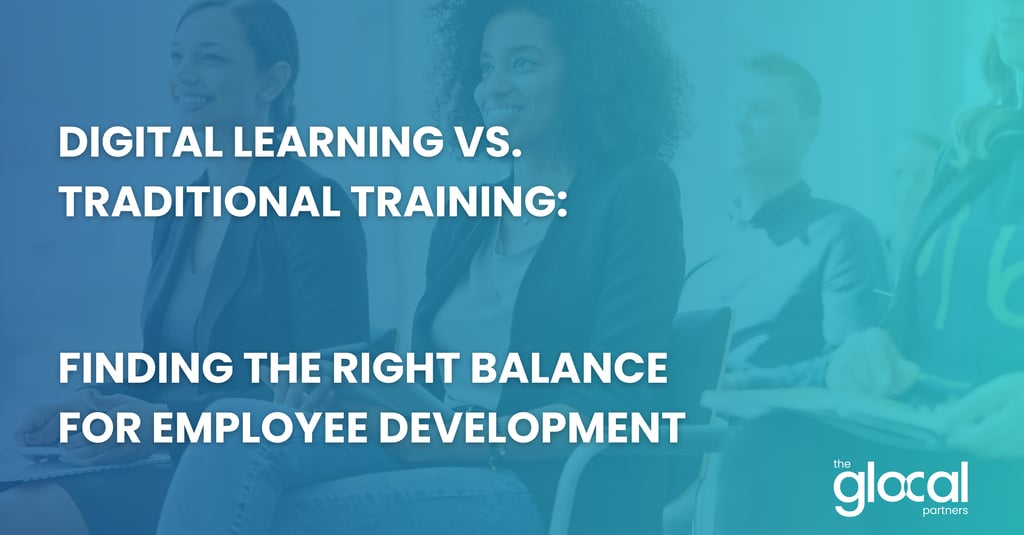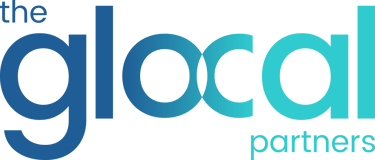Digital Learning vs. Traditional Training
Finding the Right Balance for Employee Development
The Glocal Partners
7/22/20252 min read


As organizations navigate the proliferation of learning technologies, they face the complex challenge of determining the optimal blend of digital and traditional training approaches to maximize development effectiveness while managing costs and operational constraints.
Key Challenges in Learning Modality Selection:
Effectiveness Perception Gaps -- According to Brandon Hall Group's Learning Modality Research (2023), 68% of L&D professionals significantly overestimate digital learning effectiveness for complex skill development, while 54% underestimate the impact of well-designed traditional instruction, creating misaligned investment decisions.
Social Learning Deficiencies -- MIT Sloan's Collaborative Learning Study (2022) found that 76% of fully digital training programs fail to incorporate effective social learning components, despite peer collaboration being consistently identified as the highest-impact learning accelerator.
Technology Implementation Failures -- The Learning Technologies Market Research Report by Fosway Group (2023) reveals that 72% of digital learning platforms are utilized at less than 40% of their capability, with poor implementation and integration creating adoption barriers and unrealized potential.
Generational Learning Preferences -- Deloitte's Multigenerational Workforce Survey (2023) indicates significant variation in learning modality preferences across demographic segments, with 30% of employees strongly preferring their non-dominant learning style being regularly overlooked in one-size-fits-all approaches.
Strategic Solutions for Blended Learning Optimization:
Implement modality mapping frameworks that align learning approaches with skill type, complexity level, urgency, scale requirements, and verification needs, as recommended by the 70:20:10 Institute's Learning Modality Decision Model.
Develop social learning integration strategies that incorporate collaborative elements into digital experiences through cohort-based programs, structured peer feedback loops, and facilitated virtual communities, following the Association for Talent Development's Connected Learning Architecture.
Create technology adoption ecosystems with robust implementation support, intuitive user experiences, and clear integration with learning pathways and career development, using Josh Bersin Academy's Learning Technology Implementation Framework.
Establish personalized learning pathway systems that offer modality choices where feasible, adapt to demonstrated learning preferences, and provide multimodal reinforcement of critical concepts, utilizing the Learning Guild's Adaptive Modality Model.
Key Takeaway:
According to PwC's Learning Effectiveness Study (2023), organizations utilizing strategically integrated blended learning approaches achieve 42% higher skill acquisition rates, 56% better knowledge retention, and 38% stronger application outcomes compared to organizations heavily skewed toward either purely digital or traditional approaches. Most impressively, optimally blended programs deliver these superior results while reducing overall training costs by 27% and decreasing time-to-proficiency by 34%, creating a clear competitive advantage in both capability development and operational efficiency.
Book a Free Session with The Glocal Partners to discuss more details!
References:
Brandon Hall Group. (2023). Learning Modality Research. https://www.brandonhall.com/research/learning-modality-research-2023
MIT Sloan. (2022). Collaborative Learning Study. https://sloanreview.mit.edu/ART -/collaborative-learning-study-2022
Fosway Group. (2023). Learning Technologies Market Research Report. https://www.fosway.com/research/learning-technologies-market-research-2023
Deloitte. (2023). Multigenerational Workforce Survey. https://www2.deloitte.com/insights/us/en/focus/multigenerational-workforce-survey-2023
PwC. (2023). Learning Effectiveness Study. https://www.pwc.com/us/en/services/consulting/workforce/learning-effectiveness-study-2023
theglocals@theglocalpartners.com
© 2025. All rights reserved.
This website is Powered by: The Glocal Partners LLC
